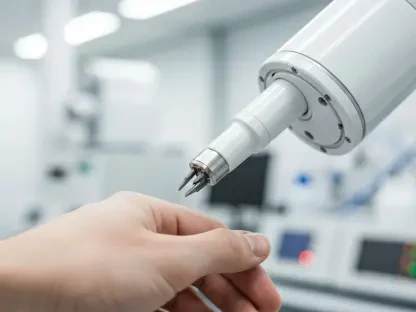I’m thrilled to sit down with Oscar Vail, a seasoned expert in supply chain management and warehousing technology. With years of experience navigating the complexities of modern logistics, Oscar has been at the forefront of integrating cutting-edge solutions like big data and automation into warehouse operations. Today, we’ll dive into the evolving challenges of product warehousing, exploring topics like inventory accuracy, space optimization, workforce dynamics, automation integration, and the critical role of data analytics in driving efficiency.
How has the rise of big data transformed the way warehouses maintain inventory accuracy?
Big data has been a game-changer for inventory accuracy. It allows us to move beyond manual counts and guesswork by leveraging real-time tracking through technologies like RFID and IoT sensors. These tools provide a constant stream of data on stock levels, locations, and movement, which feeds into business intelligence platforms. With this, we can spot discrepancies instantly, predict shortages, and optimize reorder points. The biggest shift is the ability to be proactive rather than reactive—issues are flagged before they spiral into supply chain disruptions.
What strategies have you found most effective for optimizing warehouse space using data analytics?
Data analytics helps us understand product movement patterns, which is key to optimizing space. For instance, we use historical data to place high-demand items closer to packing stations, reducing retrieval times, while low-turnover goods go to less accessible spots. AI tools also let us simulate different layouts to identify bottlenecks before making physical changes. The challenge is often balancing the cost of reorganization with the gains in efficiency, but the data usually shows clear wins in order fulfillment speed when done right.
How do you approach workforce planning to handle fluctuating demand in a data-driven warehouse?
Workforce planning now hinges on predictive analytics. We analyze past order data, seasonal trends, and sales forecasts to anticipate staffing needs for peak periods or sudden spikes. This helps us avoid overstaffing or being caught short-handed. Equally important is training—employees need to be comfortable with data dashboards and automated systems. We focus on hands-on learning and continuous feedback to build confidence. It’s all about aligning human effort with data insights to keep operations smooth.
What’s been your experience with integrating automation into traditional warehouse processes?
Automation, like robotic packaging or conveyor systems, can significantly boost throughput and reduce errors, but integration isn’t always seamless. The key is ensuring that automated tools communicate effectively with manual processes through unified data protocols. We’ve had to invest in middleware solutions to bridge gaps between new robotics and older systems. Another focus is predictive maintenance—using data to anticipate equipment issues before they cause downtime. It’s a steep learning curve, but the efficiency gains are worth it when done thoughtfully.
How do you manage the overwhelming volume of data generated by modern warehouse operations?
Handling massive data volumes starts with a solid infrastructure. We rely on analytics platforms to clean, structure, and store data so it’s accessible across teams. The goal is to turn raw numbers into actionable insights, whether for demand planning or route optimization. Breaking down data silos is a constant battle—we’ve tackled this by standardizing formats and ensuring systems talk to each other. Without that foundation, you’re just drowning in information without making smarter decisions.
What steps do you take to ensure cybersecurity in an increasingly connected warehouse environment?
Cybersecurity is critical as warehouses become more connected. We prioritize secure access controls, regular network monitoring, and encryption for sensitive data. AI helps with real-time threat detection, flagging unusual activity before it escalates. But human oversight is just as important—training staff to recognize phishing attempts or follow protocols can prevent breaches. A single outage or data leak can grind operations to a halt, so we treat security as a core part of our strategy, not an afterthought.
What is your forecast for the future of warehousing technology in the next decade?
I see warehousing technology evolving toward even greater integration and intelligence over the next decade. We’ll likely see more advanced AI models not just predicting demand but optimizing entire supply chains in real time. Automation will become more affordable, with smaller warehouses adopting robotics and drones for tasks like inventory checks. Data interoperability will be the linchpin—systems that can seamlessly share insights across vendors, suppliers, and logistics partners will define the winners. It’s an exciting time, but the challenge will be keeping pace with innovation while maintaining operational stability.









